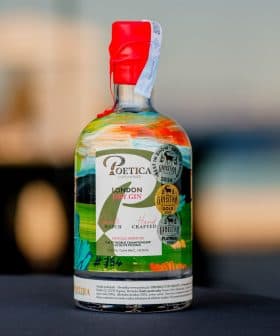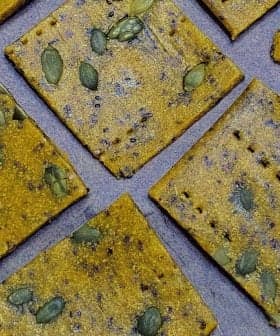 6.8K reads
6.8K readsBasics
The Role of Monounsaturated Fatty Acids in Olive Oil's Health Benefits

Extra virgin olive oil has many health benefits due to its high oleic acid content, which has positive effects on heart health, weight management, and potentially preventing dementia and cancer. Monounsaturated fatty acids, like oleic acid, found in olive oil play a crucial role in cell structure and function, and their composition can vary based on factors such as olive tree cultivar, age, and environmental conditions. The chemical structure of fatty acids influences their interaction with human biology, impacting health outcomes such as heart health and inflammation.
The exceptional health benefits of extra virgin olive oil are partially attributed to its fatty acids, particularly oleic acid, which comprises 55 to 83 percent of the oil’s total composition.
Oleic acid, classified as a monounsaturated fatty acid (MUFA), has been extensively studied by scientists over the last decades, consistently demonstrating many positive effects on human health.
Role of monounsaturated fat in olive oil health benefits
Research has demonstrated that the monounsaturated fatty acids found in olive oil can significantly enhance heart and cardiovascular health, mainly by lowering LDL (bad) cholesterol levels, increasing HDL (good) cholesterol levels and reducing triglycerides.
LDL and HDL cholesterol
LDL (low-density lipoprotein) and HDL (high-density lipoprotein) are two types of cholesterol that play crucial roles in our cardiovascular health. LDL cholesterol is often referred to as “bad” cholesterol because high levels of it can lead to the buildup of plaque in the arteries, increasing the risk of heart disease and stroke. LDL carries cholesterol from the liver to cells throughout the body, but when there’s an excess, it can deposit in the arteries, narrowing them and hindering blood flow. On the other hand, HDL cholesterol is known as “good” cholesterol because it helps remove LDL cholesterol from the bloodstream, transporting it back to the liver, where it can be processed and excreted from the body. Higher levels of HDL are associated with a lower risk of heart disease, as it acts as a scavenger, preventing plaque buildup in the arteries.
Moreover, oleic acid is recognized for its anti-inflammatory properties, further contributing to heart health.
Additionally, preliminary research suggests that oleic acid may reduce the risk of obesity by inducing a feeling of fullness, aiding in weight management.
See Also:Health NewsFurthermore, several studies have indicated that regular consumption of moderate amounts of oleic acid may play a preventive role in dementia among older individuals.
Ongoing research also explores the potential of oleic acid to inhibit the growth of certain types of cancer by suppressing the expression of genes associated with the metastasis of cancerous cells.
What are MUFAs?
“Fatty acids are essential components of lipids, which are important molecules for the structure and function of cells,” Nuno Rodrigues, a researcher at the Centro de Investigação de Montanha (CIMO) of the Polytechnic Institute in Bragança, in Portugal, told Olive Oil Times.
The word “fat” in this context does not refer to the fat content of the fatty acid but to its molecular structure.
“Fatty acids are an important source of energy for the body, being stored in adipose tissue, besides playing essential roles in the structure of cell membranes,” Rodrigues explained.
The different impacts of saturated and unsaturated fatty acids lie in their different interaction with human biology.
Unsaturated fatty acids contain a double bond, making them prone to interacting with other molecules.
On the other hand, saturated fatty acids (SFAs) contain a single bond only, which has consequences for how they are digested and absorbed.
Fatty acids’ chemical structures influence how they are metabolized and utilized by the body.
See Also:Study Reveals Insights Into the Impact of Olive Oil Fats on Essential Cell StructuresThe chemical structure of fatty acids affects the states of matter of the fatty acids, impacting the fluidity of cell membranes and how much they are prone to oxidation. These characteristics convey significantly different effects on health.
Saturated fats are mostly solid at room temperature. Meanwhile, monounsaturated fatty acids, which contain one double bond, are generally liquid at room temperature and can be found in olive oil, other vegetable oils and food such as avocados and some nuts.
Polyunsaturated fatty acids (PUFAs) contain more than one double bond, further enhancing their potential to interact with other molecules.
PUFAs include fatty acids the human body cannot synthesize, such as omega‑3 and omega‑6, found in fish, flaxseeds, walnuts and vegetable oils.
Similarly to MUFAs, PUFAs are also credited with several health benefits, including supporting heart health and reducing inflammation.
How olive oil’s fatty acids are formed
The fatty acids in olive oil are formed at the end of the olive development process, essentially during their maturation.
“In the olive tree, during the fruit’s growth, the plant produces carbohydrates that are later converted into fatty acids through photosynthesis,” Rodrigues said. “The fatty acids are stored in the cells of the olive pulp in the form of triglycerides and are the main fat molecules, olive oil, present in the fruits.”
See Also:Olive Oil BasicsAfter the olive harvest, during the extraction process, the olive oil present in the cells of the olive pulp is released and extracted.
“Olive oil is mainly composed of triglycerides, which consist of three fatty acids linked to a glycerol molecule and represent more than 97 percent of the olive oil,” Rodrigues said.
The significance of olive oil fatty acid composition
“Since fatty acids are the major components of olive oil, they are also responsible for some of the most important functions attributed to olive oil,” Rodrigues said.
According to the researcher, fatty acids are among the main contributors to the positive impact olive oil can have on health.
“Compared to other oils and fats, olive oil is very rich in monounsaturated fatty acids, between 70 and 85 percent of the fatty acids in olive oil, of which oleic acid is the most significant,” Rodrigues said.
“MUFAs are of great importance from a nutritional perspective, as lipids are the main component of our cell membranes,” he added. “Due to their greater elasticity, MUFAs confer less rigidity to cell membranes and thus act in the prevention of cardiovascular disease.”
While olive oil contains all types of fatty acids, the ratio between MUFAs, PUFAs, and SFAs determines its resistance to oxidation and shelf life.
“Fatty acids also have an important function as precursors of some volatile compounds, where fatty acids are essential components of the metabolic pathways that form the aromas of olive oils,” Rodrigues said.
MUFA composition differs among olive oils
Not all olive trees develop similar amounts of oleic acid in their fruits. Many factors impact an olive oil’s fatty acid composition, including the tree’s age.
“The work we have been developing over the last decade shows that the age of the plant is a factor that can affect the composition in fatty acids, not the fatty acids found, but the relative amount of each of them,” Rodrigues said, pointing to recent research published by Rodrigues and his colleagues.
Several factors can influence each olive tree cultivar’s composition of fatty acids.
“The most important and determinant factor is the cultivar of origin; that is, each cultivar has a characteristic fatty acid composition,” Rodrigues said.
The International Olive Council estimates more than 1,000 olive tree varieties. Only a few hundred, though, are cultivated for olive oil production.
“There are other important factors, such as the cultural practices the olive tree was subjected to, that is, whether it was produced in dry farming or irrigation, whether it was more or less fertilized, the climatic conditions, the climatic variations, the latitude and altitude and also the age of the tree,” Rodrigues said.
“Some of our work shows that older trees have a higher proportion of oleic acid than younger trees of the same cultivar,” he added.
Other contributing factors include the amount of sunlight during the olives’ ripening or the location, as olives in colder regions tend to be richer in unsaturated fatty acids.
“The ripeness of the olives at the time of harvest can significantly affect the composition of fatty acids in olive oil,” Rodrigues said. “The storage conditions of the olive oil, such as temperature and exposure to light and oxygen, can influence its stability and composition. These variables can interact in different ways, resulting in different fatty acid profiles in different olive oils.”
Know the Basics
Things to know about olive oil, from the Olive Oil Times Education Lab.
Extra virgin olive oil (EVOO) is simply juice extracted from olives without any industrial processing or additives. It must be bitter, fruity and pungent — and free of defects.
There are hundreds of olive varieties used to make oils with unique sensory profiles, just as many varieties of grapes are used in wines. An EVOO can be made with just one variety (monovarietal) or several (blend).
Extra virgin olive oil contains healthy phenolic compounds. Substituting a mere two tablespoons of EVOO per day instead of less healthy fats has been shown to improve health.
Producing high-quality extra virgin olive oil is an exceptionally difficult and costly task. Harvesting olives earlier retains more nutrients and extends shelf life, but the yield is far less than that of fully ripe olives that have lost much of their healthy compounds.










